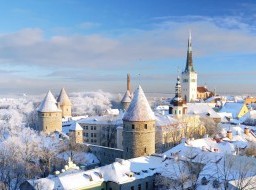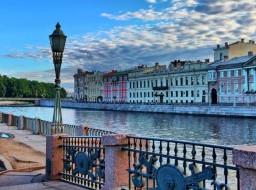Stockholm
Sweden's capital is one of the most beautiful major cities in the world, a mirage of saffron- and terracotta-coloured buildings shimmering between blue water and bluer skies all summer, or covered with snow and dotted with lights in winter. It's also a vibrant, modern city, famous for producing sleek designs, edgy fashion and world-class nightclubs. The old town, Gamla Stan, is a compact little maze of cobblestone streets. The stucco walls of its red, orange and vanilla buildings sag toward each other exhaustedly over countless souvenir shops and ice-cream parlours, while the Royal Palace crowns the tiny island. Just to the south of Gamla Stan is another island neighbourhood, Södermalm, where high waterfront hills are graced by lovely old residences and the main drags are lined with bohemian shops, art galleries and rollicking clubs. On the other side of Gamla Stan is the main city centre, a buzzing metropolis whose boutiques and restaurants can hold their own against just about any big city on the continent. Sweden’s capital city looks out proudly to the Baltic Sea to the east. Her grand public buildings, palaces, rich cultural history and museums tell her 700 year-old history beautifully. Known as the capital of Scandinavia, Stockholm has a rich and unique history. By most historical accounts, Stockholm was founded in the 13th century by Birger Jarl. With origins as a leading trade post because of its strategic location, Stockholm's name derives from the words "stock" (log) and "holm" (islet) in acknowledgement of the city's distinctive bridges and waterways. Stockholm's architectural history had its beginnings in the mid-13th century with the construction of the fortress in Gamla stan, Stockholm's Old Town. Throughout the 13th century and beyond, old Stockholm, located on Helgeandsholmen, continued to thrive. Stockholm's oldest building, Riddarholmsskyrkan, was built during this period of extraordinary growth and remains a breathtaking historical landmark alongside many of Stockholm's celebrated buildings, including Storkyrkan and Stockholm City Museum. The city's development was strongly influenced by Germany for several decades as part of the neighboring country's Hansa trade association. Many of the city's inhabitants were also of German descent. With the advent of the 17th century, Stockholm rose to recognition as a major European power. Stockholm's eventual recovery set the city on its path toward becoming a strong and vital economic body. The city was rebuilt during this time and experienced unprecedented population growth. Many public buildings were erected, including railway stations, hospitals and post offices. Additionally, Stockholm's magnificent tram system became the city's major mode of public transportation. Continuing into the 18th and 19th centuries, Stockholm was important both as a trade and cultural center, with steamships and railways based in the city. However, by the the 20th century, Stockholm had fully transitioned into the modern city we know now. Celebrated as a European cultural center, Stockholm hosts over 1500 resident artists and its thriving arts scene features many dance, theater, mime and opera performances. Whether your interests lean toward classical Swedish or American rock, folk dance in the park or summer jazz festivals, Stockholm presents cultural opportunities for all tastes and interests. Lauded for its safe and comprehensive mass-transit system, Stockholm's streets are friendly to pedestrians, cyclists and drivers. Home to more than a million residents, Stockholm features hundreds of restaurants, shops, and galleries. In fact, Stockholm is increasingly recognized as a rising star on Europe's fine dining and culinary scene. Visitors to Stockholm can choose from a variety of landmarks and areas of interest, including a multitude of historical sites like The Vasa Museum, which houses the world's oldest restored warship; the "Old Town" of Gamla Stan; The Royal Palace, exhibiting both the Swedish Crown Jewels and the Royal Armory; Skansen, the world's oldest open-air museum which displays ancient houses, windmills and churches from all regions of Sweden; and the residence of the Swedish Royal Family, the famed Drottniingholm Palace. Stockholm also offers numerous outdoor areas to explore, including parks, forests, and islands. The city's Ekopark is an extraordinary expanse of nature located right in its heart. Visitors should also spend time exploring Stockholm's massive archipelago, the largest in Sweden. The city is so clean that adventurers can swim and fish right in the heart of the city. A booming boating industry is no surprise - the waterfront bustles with a colorful array of ferries, sailboats and yachts cruising out toward the Baltic Sea. A visionary capital city, Stockholm today represents the merger of its rich and vital history with modern and revolutionary advances in science and technology. The sophisticated city is recognized throughout Europe and all over the world as an economic and political center with an ethnically diverse population of residents, all of which make Stockholm a unique and inviting tourist destination. |








